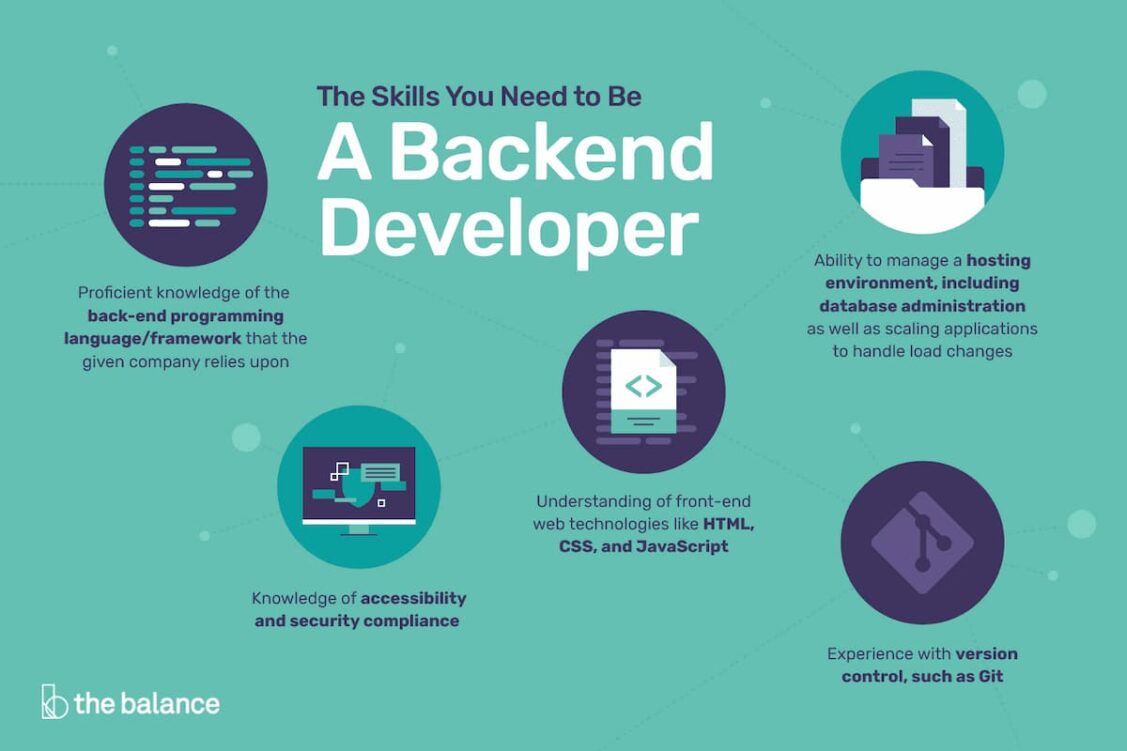
First things first, what exactly is Back-End Development? Well, we need to get that out of the way before delving into any pros and cons! Back-end development is very important for video games and if you’re an aspiring video game developer or are interested in how the cogs work, this article would be informative for you!
In essence, Back-end development is the process of working on server-side software, which typically focuses on everything that can’t be seen on the final product. Back-end developers are the people for the job and they ensure that the game performs correctly, paying attention to the databases, back-end logic, application programming interface (APIs), architecture and servers. They tactfully utilize the code in order to help the platforms communicate with databases, store, understand and delete data as well.
A complete team consists of back-end developers who collaborate with front-end developers, product managers, principal architects and game testers, working together to build up the intricate structure of the video game. Back-end developers must also be quite familiar with various kinds of tools and frameworks. This includes languages like Python, Java and Ruby. They must also make sure that the back-end performs swiftly and responsively to front-end user requests.
PROS
- Running in Various Environments
Nowadays, Video Game companies develop and release a wide variety of games for eager gamers worldwide, all within a range of environments. Some organizations choose games operating on database servers, while others install online apps on the cloud. The setup of servers varies from network to network, but programmers tend to distribute the workload from the server-side over multiple machines quite often. These varying hosting environments make game customizations from the backend essential for all game developers.
- Faster Information Sharing
Back-end development possesses three critical elements in any game: Application, Server and Database. Each and every player should be able to provide his or her username and password while accessing the game’s user interface. This ID and password must be checked via the runtime. In the same way, any details submitted by the user must be processed via backend applications in the repositories. It is common for the back-end to retrieve data from archives and transfer the information onto the interfaces. Thus, the back-end serves as a pivotal framework and enables the sharing of information.
- Code Logic Requirement
Most game programmers prefer to keep the user interface and application logic separately, to simplify development and maintenance. A game’s back-end contains the logic for its application. Therefore, developers must focus on the progression of the back-end to seamlessly switch from one frontend to another, allowing multiple user interfaces access to the same application logic.
- Impacting the Game’s User Experience
The game’s accessibility and user interface will largely depend on its overall success in the long run. The consistency of its back-end technology can greatly influence the player’s gaming experience. As such, any and all problems with the back-end code would lead to frequent crashes, slow running and similar performance issues. To avoid such titanic issues, game developers must work hard on the consistency and layout of the back-end code to ensure that the game offers a better user experience without any interruption.
- Adds Functionality Utility to Each Frontend Development
Game Programmers write back-end code to add utility to the functionality of each and every frontend. Back-end code adds functionality to player logins, profiles, and accounts throughout the game’s runtime. Without such quality backend technology, our favorite games won’t run at all.

CONS
- No Personalized Automated Operations
There is an absence of choices for specialized atomic services, which makes it impossible to solve the most severe market problems in the gaming industry.
- Limited Count Operations
There are severe limitations on the count operations doable. Even these vary each time but cannot exceed 160.
- Less Control Offered
Gamers have reduced networking power, which retards them from executing their activities however they wish.
- Security issues
If security is of prime importance, the developers ought to go for a custom backend cloud dedicated to their game alone. Additionally, they must formulate protection strategies that may vary according to business models.
- Delayed Notifications
Updates may get postponed, but it’s only up to an hour most of the time.

These are but a select few of the Pros and Cons of Back-end Development. Game Developers must perform back-end services via selection of the correct language and framework for programming. While the option to choose from many programming languages on the server-side exists, the selection must meet all their project needs. They must also be mindful enough to pick the right web development framework and tools according to the programming language specific to the server-side.
We hope this article gave you a decent idea about Back-end development, alongside some of its key advantages and disadvantages.